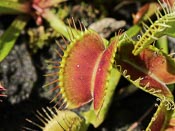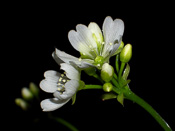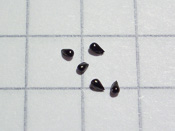Cultivation
Dionaea
The Venus fly trap (Dionaea muscipula) is one of the best known species among carnivorous plants. If a prey touches the bristles in the red traps twice within 30 seconds, the trap snaps shut and the insect is caught. After that, the trap only opens again about a week after the prey has been digested. This mechanism only works a few times. The trap then dies along with the entire leaf. The flowers are less spectacular, sit on a relatively long flower stem and are white. If someone does not like the plant despite the specular mechanism, this is not a problem either, since there are now so many different clones with different mutations that there is really something for everyone. But I will only talk here about the normal form:



Dionaea muscipula
English name: Venus fly trap
Described by: John Ellis (1768)
Distribution: 100 km around Wilmington, also South and North Carolina (USA)
Habit, Duration: terrestrial, perennial
My own experience:
It all started when I was about nine years old: my parents bought the first Venus fly trap in a hardware store.
After about a month the adventure was over and the plant died. Today I know that it deserves a brighter place and maybe I shouldn't have poured it with tap water.
A few years and mosquito bites later, I decided to buy some carnivorous plants for protection. Among them was a Vft. But this time I wanted to do better.
I put it on my window (north side) and only used rainwater. Strangely, it turned deep red and bloomed there.
In winter it died above ground and in spring it grew again and bloomed.
After a while with the lack of hibernation and the modest lighting conditions the plant didn't grow very well, so I placed it next to the south window.
Unfortunately, it died there after a few years, because it was apparently too late for that.
For some years now I have been cultivating a few Venus fly traps again. But this time I put them right outside in the bog garden.
There they grow much better than inside on the windowsill.
Light: very bright
Humidity: >60 %
Temperature: Summer: 20-30 °C, Winter: 5-10 °C or less
Substrate: Peat-sand-perlite mixture
Watering: Pot always in about 1 cm of water
Propagation: Seeds, leaf cuttings, division
Level of difficulty: 


